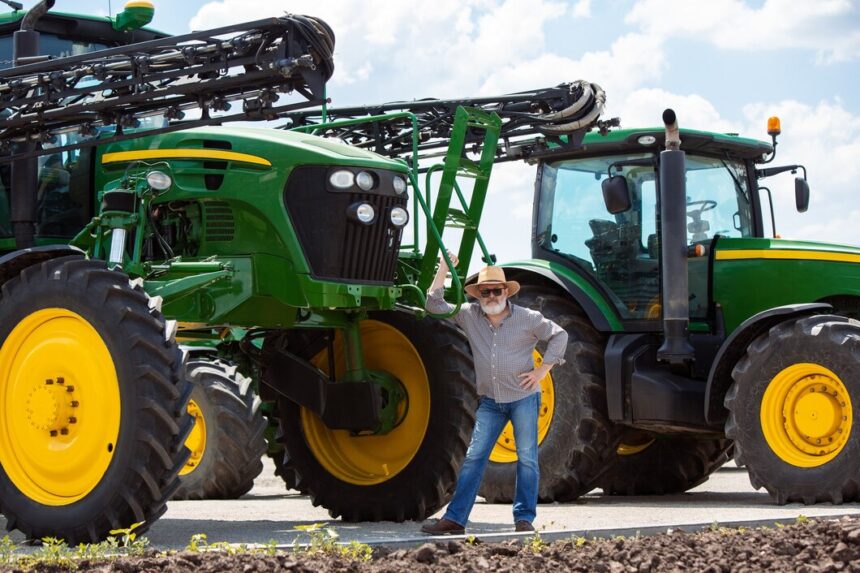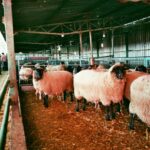The rise of autonomous tractors is revolutionizing modern agriculture, promising increased efficiency, reduced labor costs, and improved precision in farming operations. These self-driving machines use advanced GPS, artificial intelligence (AI), and IoT connectivity to perform tasks such as plowing, planting, and harvesting with minimal human intervention. However, with high upfront costs and evolving technology, many farmers are wondering—are autonomous tractors truly worth the investment?
How Autonomous Tractors Work
Autonomous tractors are equipped with cutting-edge technology that enables them to navigate fields, avoid obstacles, and execute tasks with precision. Key components include:
- GPS and RTK (Real-Time Kinematic) Positioning – Ensures accurate navigation and path planning.
- AI and Machine Learning Algorithms – Analyze field data for optimal operations.
- IoT Connectivity – Allows remote monitoring and control via mobile or web applications.
- Lidar and Camera Sensors – Detect obstacles and enhance safety.
- Automated Implement Control – Adjusts seeding, spraying, or tillage settings based on real-time conditions.
These features allow autonomous tractors to work long hours without fatigue, adapt to changing conditions, and optimize resource usage, making them a promising innovation for large-scale and precision farming.
Benefits of Autonomous Tractors
- Reduced Labor Costs
With a growing shortage of skilled farm workers, autonomous tractors provide a solution by minimizing the need for human operators. Farmers can allocate labor to more strategic tasks, reducing overall expenses. - Increased Efficiency and Productivity
These machines operate with high precision, reducing overlaps and ensuring optimal use of inputs like seeds, fertilizers, and pesticides. They also work continuously without breaks, covering more ground in less time. - Precision Farming and Sustainability
Autonomous tractors integrate with precision agriculture techniques, optimizing resource allocation and minimizing waste. This reduces environmental impact while improving crop yields. - Safer Farming Operations
Removing human operators from hazardous tasks like tilling or spraying chemicals enhances safety on the farm. AI-powered obstacle detection further reduces the risk of accidents. - Remote Monitoring and Control
Farmers can manage autonomous tractors from their smartphones or computers, receiving real-time data on performance, fuel efficiency, and field conditions.
Challenges of Investing in Autonomous Tractors
- High Initial Costs
Autonomous tractors come with a hefty price tag, often ranging from $200,000 to over $500,000. While they offer long-term savings, the upfront investment may be prohibitive for small to mid-sized farmers. - Technology Limitations and Connectivity Issues
Reliable GPS and internet connectivity are essential for autonomous tractors to function effectively. In rural areas with poor infrastructure, this can be a significant barrier. - Maintenance and Repairs
The complex technology in these tractors requires specialized maintenance, leading to potential downtime and additional costs. - Regulatory and Liability Concerns
Autonomous machinery regulations vary by region, and legal responsibility in case of malfunctions or accidents is still a gray area. Farmers must stay updated on evolving policies. - Adoption and Learning Curve
Transitioning to autonomous farming requires training and adaptation. Farmers need to understand software, automation systems, and data analytics to maximize efficiency.
Are Autonomous Tractors Worth the Investment?
The decision to invest in autonomous tractors depends on various factors, including farm size, budget, and operational needs. Large commercial farms with vast fields and significant labor costs may benefit the most from automation, as the long-term savings and efficiency gains outweigh the initial investment. However, for small-scale farmers, the high costs and infrastructure requirements may pose challenges.
As technology advances and prices gradually decrease, autonomous tractors will become more accessible, making them a more attractive investment for a broader range of farmers. In the meantime, hybrid models—where tractors have autonomous capabilities but still allow manual operation—offer a more flexible and cost-effective transition.
Autonomous tractors represent the future of farming, offering unparalleled efficiency, cost savings, and precision. While the investment is substantial, the long-term benefits can justify the cost for large-scale operations. As connectivity improves and prices become more competitive, these self-driving machines are likely to become a staple in modern agriculture, reshaping the industry for years to come.
Join 'Farmers Mag' WhatsApp Channel
Get the latest Farming news and tips delivered straight to your WhatsApp
CLICK HERE TO JOIN






